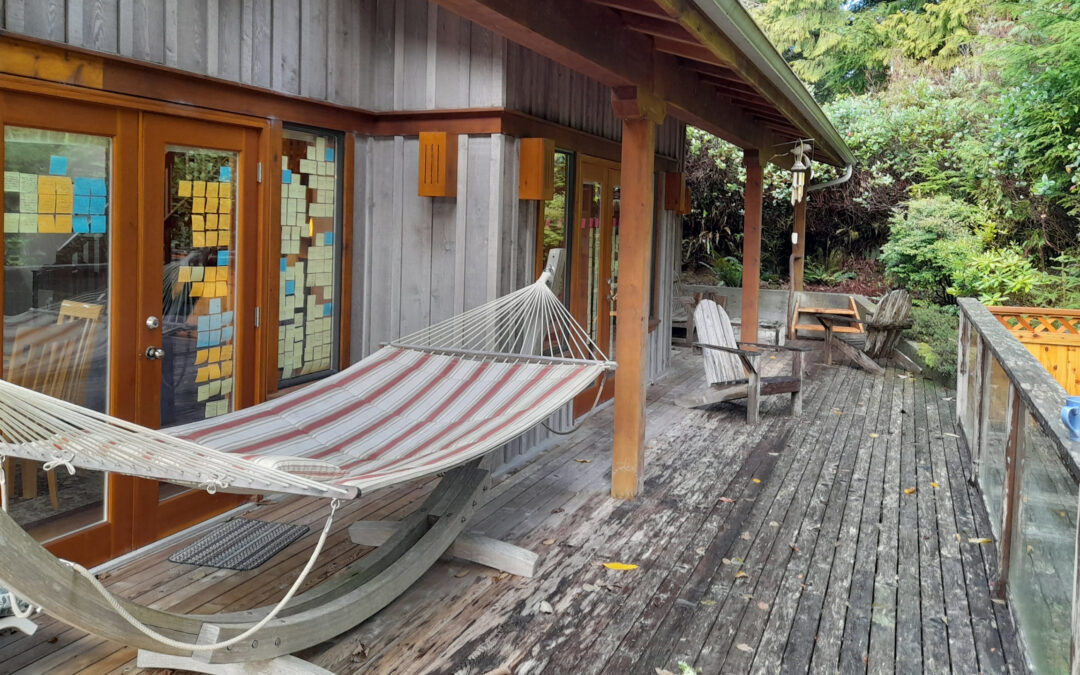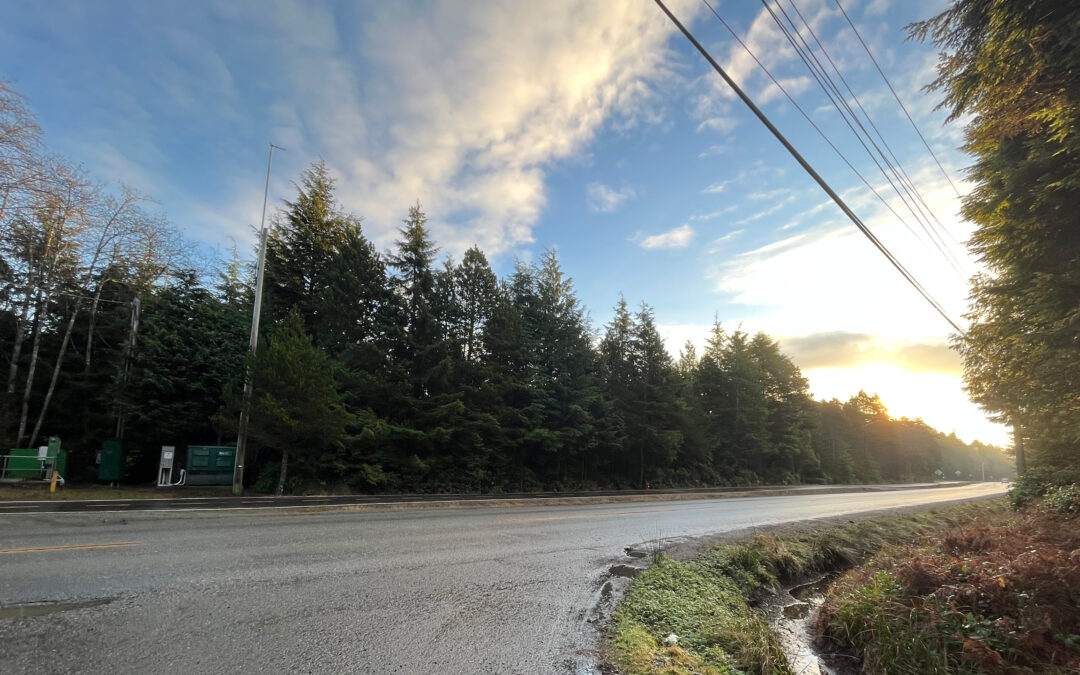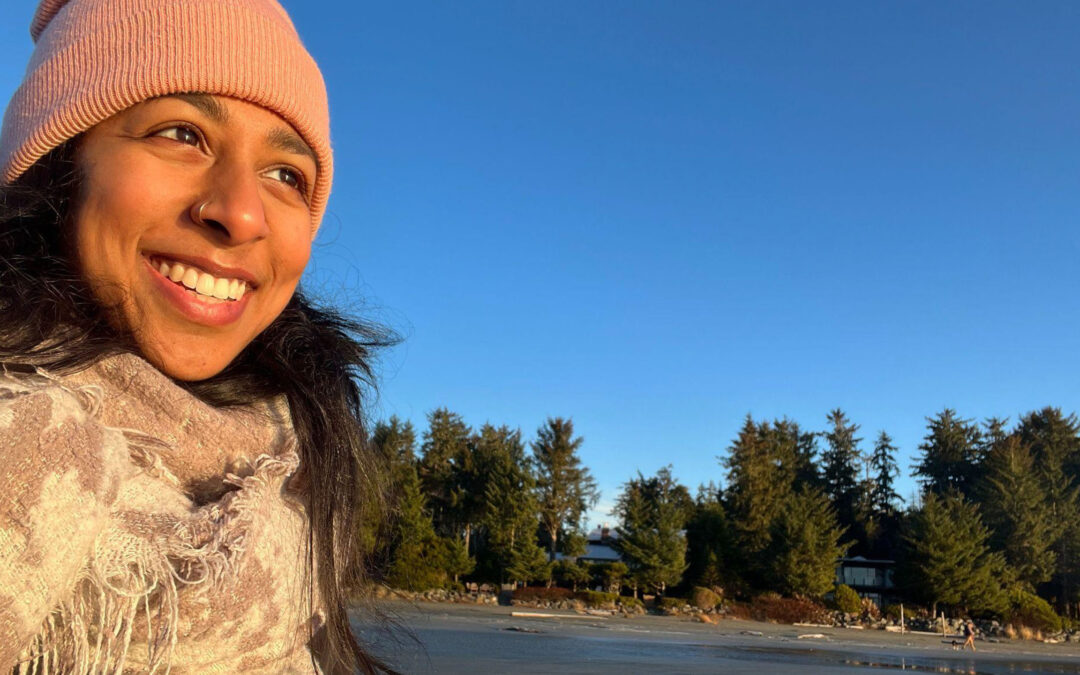“It is a commitment to a different way of being, and it’s an emergent approach, which means you’re not going to do a study and have an outcome and then apply it, but it’s in the process of doing it that the approach is borne.” – AB, Nov 3
We took an emergent and responsive approach to building the 30-day Apprenticeship with Mortality practice and designing the Mortal Method retreat.
To emerge means to “become apparent, important, or prominent” to “come into view” to “become known.” To be responsive means to “give response” to “answer.” For me, being an emergent, responsive practitioner refers to the capacity to meet, acknowledge, and iterate one’s process and outcomes based on what becomes known or comes into view during a project, relationship, or undertaking.
To be clear, being an emergent, responsive facilitator does not equate to not having a plan. Rather it means moving with intention, an understanding of our greater purpose / “why”, while remaining open to being changed by the process and those engaged in it with us. It is knowing that not everything can be planned for or known beforehand, that there will be insights that only emerge as we are engaging the work, and believing that the fact that they weren’t planned for shouldn’t be grounds for dismissing them and the wisdom they may carry. It is acknowledging that as we are changed by the work, we may need and want different outcomes out of it or a different process for engaging with it. Simply put, it means having a plan (which for me = intention + direction) and being open to iterating the plan as new knowledge, needs, desires, constraints and boundaries emerge.
Some of the ways in which this mindset and approach manifested in our work include:
1. Building the 30-Day Practice around Emerging Questions
2. Building the Care Survey to Address our Emerging Hopes and Fears
3. Building an Emergent Process for Defining the Qualities of Mortality
4. Building Regular Opportunities for Reflection, Feedback, and Iteration
5. Building the Focus of these Blogposts Based on Emerging Themes in our Process
1) Building the 30-Day Practice around Emerging Questions
The topics and prompts for the 30-day Apprenticeship with Mortality practice emerged from themes and questions that we were grappling with in our meetings about the Mortal Method. This included the five qualities that we honed as a part of the Mortal Method (finitude, embodiment, connection, eros, and meaning-making), as well other recurring themes in our conversations like paradox, indulgence, and enough-ness / satiation. I took the fact that they kept coming up as a data point that 1) we were invested in them and 2) we needed more time, space, and structure to unpack our respective, and then collective, relationships to them. In this sense, using the 30-Day Practice as a way of diving deeper into these themes in advance of the retreat was a way of actioning both of those emerging insights.
“I really, really like this. You’re [Mathura] pulling in so much of what we’ve spoken about.” – AB, Oct 28 re: Apprenticeship with Mortality practice prompts
“This is the thing that you [Mathura] do that I love so much is that you pulled in all the themes from our earlier conversations, the themes from the key concepts. – JB, Oct 28 re: Apprenticeship with Mortality practice prompts
2) Building the Care Survey to Address Our Emerging Hopes and Fears
The first two days of the 30-day Apprenticeship with Mortality practice were designed to surface our hopes and fears around engaging in this work. In debriefing some of what emerged for each of us in response to these prompts at our next meeting, I realized that we could intentionally design the retreat and the practice in a way that could move us toward our hopes while mitigating some of our fears.
For example, we realized that we were holding some fear around what a “successful retreat” and “deliverable” looked like for each of us and anxiety around the answers being different for all three of us. As a way of meeting this fear, I included questions in our care survey that prompted each of us to reflect on what would signal “success” in terms of the retreat, how we wanted to feel by the end of it, and the final deliverable that we felt most invested in.
In the process of planning the retreat, we also realized that while we had been collaborating for a few months as the three of us and both Albert and I had had working relationships with Julia, none of us had actually shared IRL space for that much time (7 days) before. To address our hopes around wanting to respect each other’s boundaries and care needs during our time together, the care survey included questions about when we typically arise from and go to bed, what we need to care for ourselves physically/mentally/emotionally/spiritually, when we do our best work, what we need to recharge, and when how we prefer to process and integrate after a work session. In thinking intentionally about these things for ourselves and then sharing them with each other, we were better equipped to notice and be responsive to our own and each other’s needs and boundaries as we shared space at the retreat.
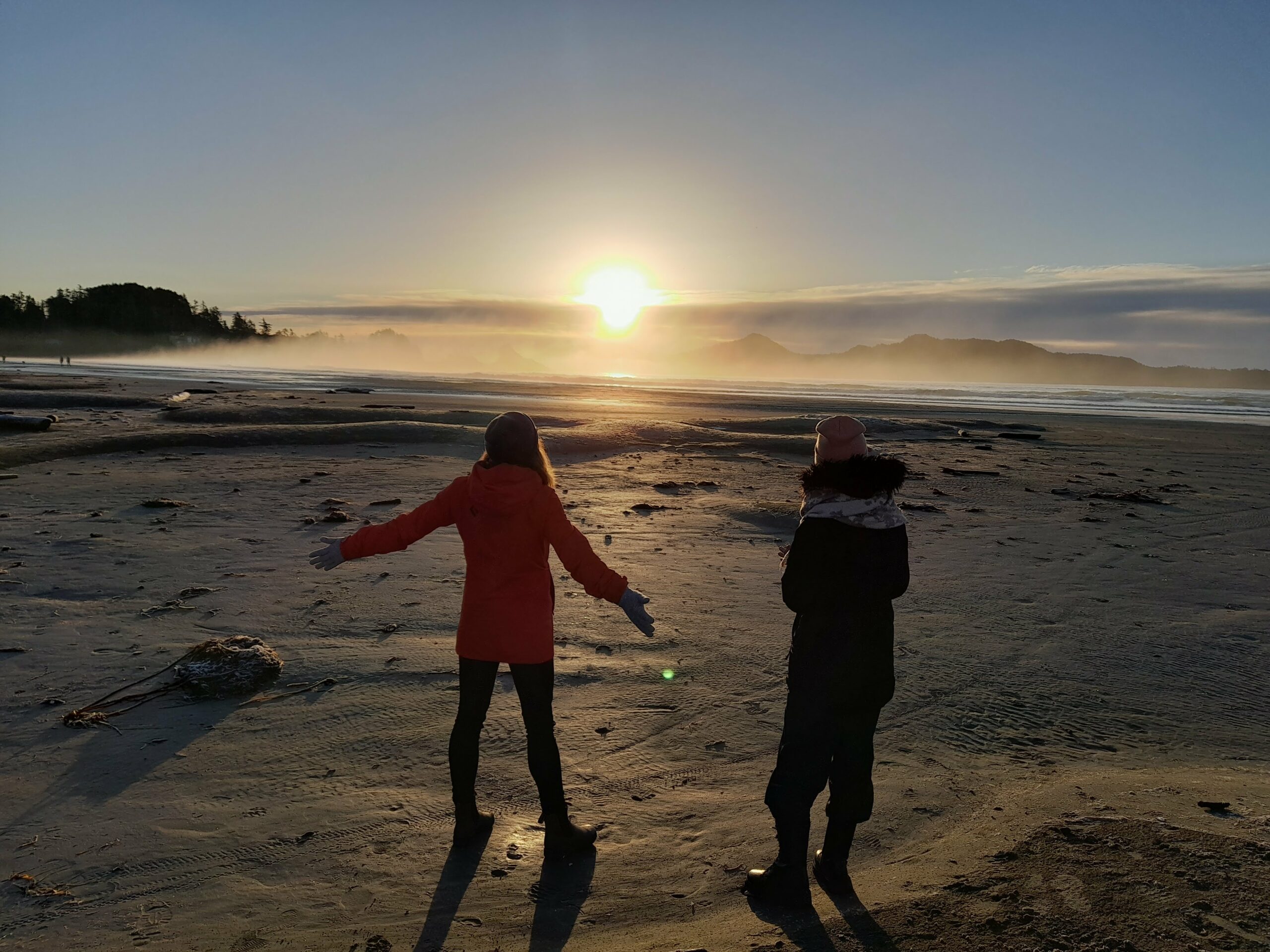
3) Building an Emergent Process for Defining the Qualities of Mortality
Coming into the retreat, we had spent time gathering quotes and making notes on each of the five qualities (i.e. finitude, embodiment, connection, eros, and meaning-making) we believed would make up the Mortal Method. While the goal was to define, refine, and write out a summary of each quality at the retreat, we did not have a predetermined process for how we would go about it. That was emergent.
In the lunch hour before our first session on the qualities, Julia decided to write out each of the qualities and the subtopics within them that we had discussed in the lead-up to the retreat on post-it notes. She posted them on a wall near the table where we’d be working. We decided to focus our first session on Finitude as a quality. We read out the subtopics that Julia had captured under finitude and, upon one of our suggestions, read aloud the Finitude section of the primary document in which we’d dumped all of our thoughts on each quality in advance of the retreat. This included our own musings as well as definitions and quotes from authors and thinkers we’d be learning from. After reading it aloud, we revisited our respective responses to the finitude-related prompts we had each worked through as a part of the 30-day Apprenticeship with Mortality practice and shared what we felt comfortable to share with each other. We then talked through how we saw the different subtopics within finitude fitting together, and added any subtopics that had emerged from revisiting the practice. Now that we had refreshed our memory around all of the inputs we wanted to factor into our summaries, it was time to write. We decided that we’d write the summaries separately at first and then share, so that we each had time to process the quality for ourselves. Next, building on my tendency to create activities out of tasks as a way of adding play and creativity, Julia suggested that we build out our summary for Finitude by trying to “Mad-lib / Frankenstein” together the different subtopics. In other words, how might we try to summarize finitude in a concise way that ties together all the subtopics we had listed under it and the interconnections between them. This made it a game – how many subtopics could we fit into our respective summaries, while keeping it concise and clear? We set a timer for ourselves, which gave us a useful constraint for pushing past perfectionism and gamified it even more.
“You’ve [MM] rubbed off on me in terms of thinking to work through a question through an activity.” – JB, at the retreat
Once the timer went off, we read our summaries aloud to one another. This was perhaps the most surreal part of the process. To see how each of us had taken the same inputs, processed it through the lens of our own lived experiences, personalities, and writing styles to process entirely unique yet deeply interconnected summaries. We gushed over our “synchronous similarities and delicious differences,” as we called them. No one summary covered it all, but together we had said everything that we wanted to say. It was in that moment of appreciating the richness of multiple interpretations that we decided that we wouldn’t try to splice together bits and pieces of our individual summaries to try and create a single interpretation. Instead, we would display them side-by-side. We would show, rather than tell, that part of applying the Mortal Method requires examining our personal relationship to mortality and its qualities rather than accepting universal definitions without question. Having three summaries didn’t take away from the richness of each one, but rather amplified, deepened, and refined them.
In this way, this process of unpacking each quality emerged from our desire to develop the method by embodying the method, the work that we had done in the lead-up to the retreat to gather our thoughts on each quality, the inspiration we had gathered from other thinkers and authors, and our desire to work in ways ‘yes-and’ each other’s suggestions and tap into our innate capacities for creativity and play.
Given how beautifully it worked for Finitude, we followed this same process to generate summaries for the remaining four qualities of mortality.
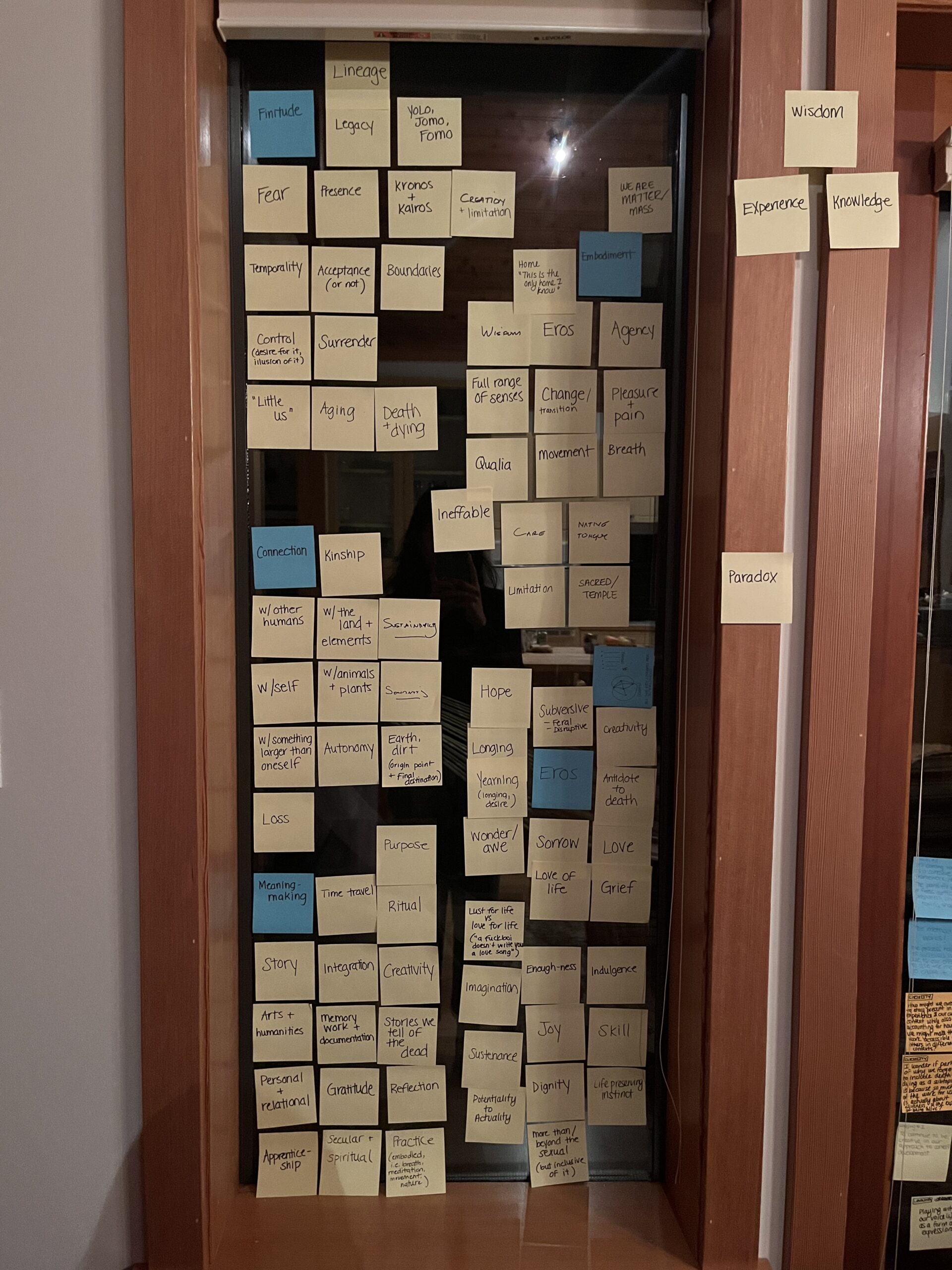
4) Building Regular Opportunities for Reflection, Feedback, and Iteration
At the end of each day of the retreat, after we had stepped outside for dinner and returned home to our work space, we spent a half hour in the evening engaging in a harvesting practice. I would share a few prompts for each of us to reflect on individually and then share back with each other. The purpose of the harvest prompts was to surface key learnings from each day so that we might use those insights to inform and iterate how we move through the following day(s).
Some of the harvest prompts I offered include:
- What clarity emerged for you as a result of engaging in today’s work?
- What curiosities emerged for you as a result of engaging in today’s work?
- What longings do you hold around how we spend the rest of our time together?
- What are your highlights from today?
- What are your hopes for tomorrow?
- What questions are you sitting with coming out of today and going into tomorrow?
- Complete the following prompts:
- “Before we leave, I’d like to…”
- “To continue to engage meaningfully in this work, I’d like / need…”
- “Something I want to remember is…”
- How are you changed by this week or this work?
Less formally, we also cultivated a group dynamic where we encouraged each other to share any fears, concerns, or anxieties we might be holding with respect to the work and the process, so that we might respond to them together. For example, after a stretch of rainy days, the weather forecasted a few hours of sunshine in the middle of the day, when we were scheduled to have a work session. When one of us voiced the desire to make the most of the limited sunshine by spending some of that time outside, it created the space for us to respond by shifting our work session slightly so that we could enjoy those finite hours of sunshine and return to the work more nourished by that time to commune with nature.
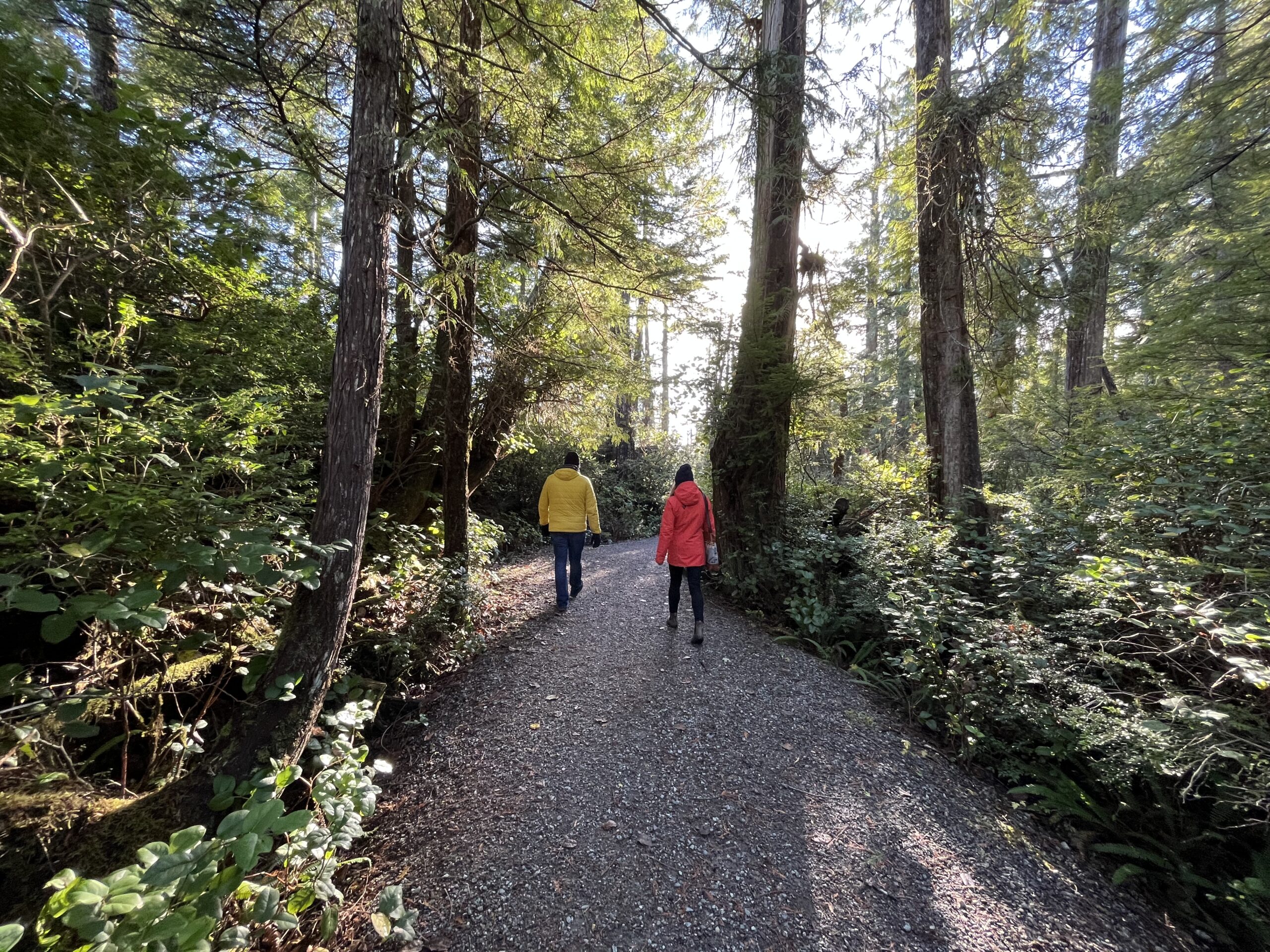
5) Building the Focus of these Blogposts Based on Emerging Themes in our Process
The desire to be responsive to what emerges was also embodied in our approach to synthesizing the findings of this work. With respect to sharing our process of developing the Mortal Method by living it, my task was to discern and unpack key themes through these blogposts. In order to identify these themes, I went through the transcripts of our Zoom meetings in the lead-up to and following the retreat, pulled key quotes that highlighted recurring reflections, and essentially coded our conversations to see what themes emerged and solidified over the course of our process from conception to completion through to debrief. The themes that surfaced in this coding make up the topics that we’ve chosen to dive deeper into and share at length in these blogposts. For me, this felt like a rigorous and integrous way of honouring the intentions, questions, and challenges that were most present for us as we went about creating this body of work around the Mortal Method.
“I love that you’re doing a piece on process and we don’t know what it will look like yet, because that’s kind of what this whole thing has been. It’s a process, and we never knew exactly where we’d end up.” – JB, Feb 10
“I think what I’m realizing through this exercise is how much content we already have in terms of process and how much has crystallized over the course of how over many months now, like six months now.” – MM, Feb 22
“The qualitative researcher in me is like you basically coded our meetings in a sense and developed these themes, which in and of itself, is a major project. – AB, Feb 22
CONSIDERATIONS FOR BUILDING AN EMERGENT, RESPONSIVE PRACTITIONER
1. DISCERNMENT: An important part of being an emergent, responsive practitioner is being able to exercise discernment, or knowing which emerging insights to act on and which to simply notice and acknowledge. In our case, having a clear purpose to guide us helped us discern which insights warranted action that would be aligned with and in service of our purpose and which ones didn’t.
2. STRUCTURE: As I shared at the top of this blogpost, being an emergent, responsive practitioner requires a plan. It requires structure and intentionality. For example, as much as our meetings before and after the retreat did not have set agendas, the regularity and ritual of a recurring meeting in the calendar meant that we had a predetermined space for hashing through ideas, sharing reflections, and working through challenges. While we didn’t have a set agenda for exactly what we’d do on each day of the retreat, having a menu of topics we wanted to work through and designated time for group work each day helped us be responsive to the needs of the moment while honouring our intentions and purpose for gathering. Having these structures in place gave us the permission and security to be flexible when needed, and ultimately created a space where we felt more comfortable leaning into emergence.
“I had been loving them [the Apprenticeship with Mortality practice prompts] and just thinking about how important it is as a ritual because it has become that every day I’m thinking about mortality. And it’s very different than my usual . Even though this is an area that I’ve been working in, it’s very personal…I can get why that matters, why it matters to have this structure and why it matters to personalize it . And then the way that you’ve been building the prompts, they’ve been really, really nicely constructed , picking up on things we’ve talked about and building on them.” – AB, Nov 10
“AB: In terms of the schedule, we have it sort of mapped out in terms of the blocks [of time for work]. Do we want to do any more detail in the work blocks or is that something that will be a bit more emergent and we’ll map it out while we’re there in a responsive way rather than a pre-planned way.
JB: Might we consider a menu where we say “these are the things we’ve said we need to talk about in our content,” and then each day see what we feel like ordering?
AB: It’s such a cool idea.
JB: Like these are the things we want to talk about. Today, we might be inspired and feel like talking about this thing. So then the next day we talk about something else, so we always know what there is, but we can follow our flow.
AB: Prescriptive and responsive at the same time. That’s a great idea.
MM: …And for the stuff we don’t get through in our finite time, then we have a list afterwards of what we need to follow up on.”
– Nov 24
3. UNCERTAINTY: Being an emergent, responsive practitioner requires cultivating a mindful relationship with uncertainty. It means being okay with not having everything figured out at the beginning, while being aware of our evolving individual and collective tolerances for not knowing. It requires doing the necessary prep and putting the structures in place to facilitate emergence, and trusting that this labour will bear the fruits we need to move forward in our process. It means knowing when there’s time, space, and capacity to wait for something new to come into view, and when a decision needs to be made with the information we have at hand in this moment.





